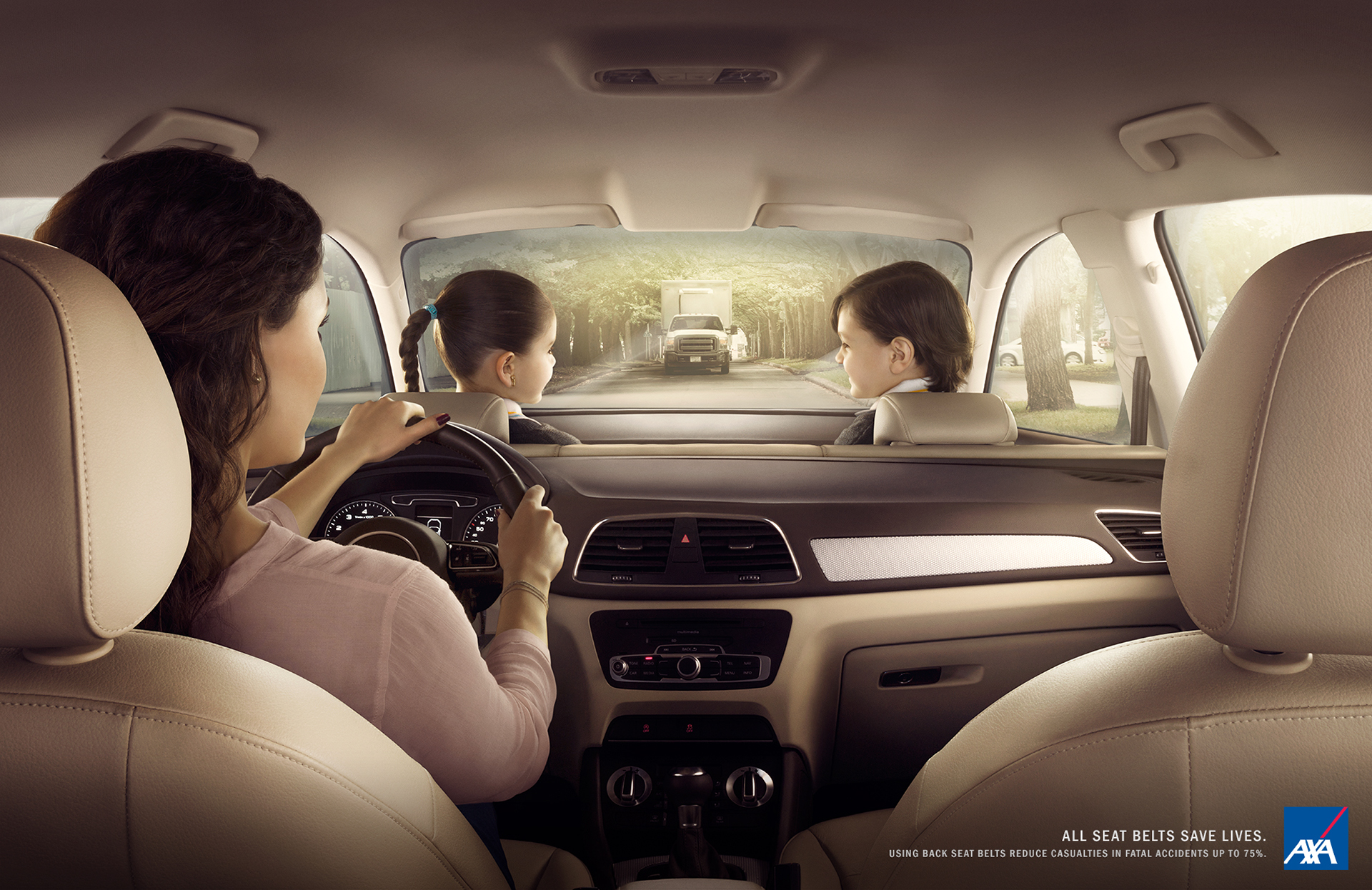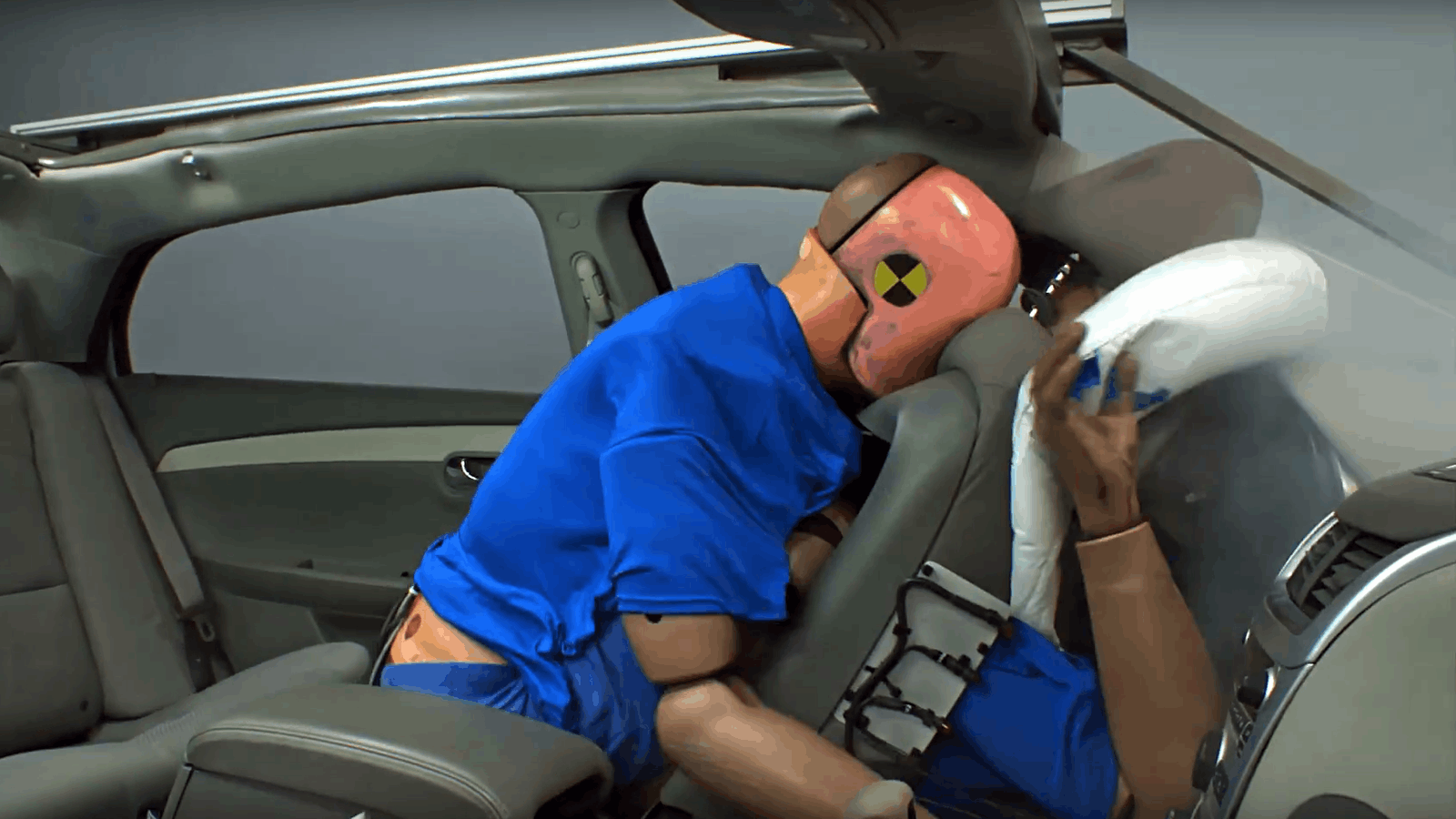
When it comes to car accidents, we all want to make sure that we are doing all we can to protect ourselves and our loved ones. Issues with motor vehicles can arise, even after a minor collision. That’s why it is important to know how car accidents can weaken car seats and what steps you should take to ensure your safety.
Car seats are designed to absorb the impact of a crash and protect the people inside the car. However, when vehicles collide, the force of the crash can damage the integrity of the car seat. This is especially true for children’s car seats, as they are designed to withstand specific criteria to provide maximum protection.
Studies have shown that even a minor accident can cause damage to a car seat. Therefore, it is advised to contact the manufacturer of the car seat and report the crash event. They will generally define the necessary steps you should take, such as disposing of the damaged car seat and replacing it with a new one.
If your car seat was stolen during the accident, it is important to notify the police and your insurance company. They will require a police report and any receipts you have for the car seat, as well as any other information that can help with the investigation.
In some cases, it may be necessary to consult with a lawyer. Lawyers who specialize in car accidents can assist you in dealing with insurance companies, manufacturers, and any other parties involved in the accident. They can also help answer any legal questions you may have and ensure you receive the proper compensation for your damages.
In conclusion, car accidents can weaken car seats, and it is important to take the necessary steps to ensure your safety. If your car seat was damaged during an accident, dispose of it properly and contact the manufacturer for a replacement. If you have any doubts or questions, consult with a lawyer who can guide you through the process and help protect your legal rights.
Contents
Car Accidents and Car Seats: What You Need to Know
In the event of a car accident, the safety and effectiveness of your car seats can be compromised. It’s important to understand the risks and take proper measures to protect your children.
Were you involved in a recent car accident and your car seat wasn’t properly installed? Do you know what steps to take next? Let us help you navigate through the process.
Firstly, it’s crucial to know that car seats are designed to absorb the impact of a crash, protecting your child from injury. However, after a collision, their ability to perform this function may be compromised. In most cases, it’s recommended to replace the car seat, even if it appears undamaged.
But who is responsible for buying a new car seat? According to the law, the at-fault driver’s insurance generally covers the cost of replacement. However, if you were at fault or your insurance doesn’t provide coverage, you may be responsible for buying a new seat out of pocket. It’s essential to know the laws in your area and consult with an attorney if needed.
The National Highway Traffic Safety Administration (NHTSA) defines specific criteria for when a car seat should be replaced after a crash. They cite factors such as the severity of the crash, the position of the car seat at the time of impact, and whether the airbags were deployed. It’s important to consult the manufacturer’s guidelines and seek professional advice as to when your car seat needs to be replaced.
Moreover, it’s crucial to inspect your car seat thoroughly after an accident, regardless of the severity. Look for any visible damage, such as cracks, deformities, or loose parts. Even minor issues can weaken the seat’s structure and compromise its ability to protect your child in future collisions.
If your car has been stolen or involved in a major accident, it’s vital to replace the car seat immediately. Additionally, ongoing recalls or safety issues with your car seat should also prompt you to seek a replacement.
To ensure your child’s safety, make sure you properly install the replacement car seat. If you’re unsure of how to do it, consult the manufacturer’s instructions or reach out to your local law enforcement or child safety seat inspection event for help.
In conclusion, car accidents can weaken car seats, and understanding the importance of replacing them under certain circumstances is crucial for your child’s safety. Always stay informed, follow the law, and seek professional advice when needed to ensure that your child is properly protected in the event of a collision.
The Impact of Car Accidents on Car Seats
Car accidents can have a significant impact on the integrity and safety of car seats. When a car crashes, the force of the impact can cause damage to the car seat, compromising its ability to protect the occupant. This is why it’s important to understand what can happen to car seats in the event of a crash, and why proper replacement and disposal is necessary.
In the United States, the National Highway Traffic Safety Administration (NHTSA) requires car seat manufacturers to certify that their seats meet certain safety standards. However, not all car seats are able to withstand the forces of a crash. The NHTSA recommends that car seats be replaced after any moderate to severe crash, as these crashes can cause unseen damage that may reduce the seat’s ability to provide proper protection in the future.
If you have been in a car accident, it’s important to check your car seat for any signs of damage. Even if the seat does not appear to be visibly damaged, there may still be issues with its safety and effectiveness. Some car seat manufacturers provide guidelines on when a seat should be replaced after a crash. Check the car’s seat manual or contact the manufacturer to find out their recommendations.
If you are unsure about the safety of your car seat, it’s always best to err on the side of caution and replace it. Your local car seat inspection station or law enforcement agency can also help you determine if your seat needs to be replaced. Additionally, there are lawyers, such as Hasner Law PC in Atlanta, GA, who specialize in car accident cases and can provide guidance on car seat safety and replacement.
When disposing of a damaged car seat, it’s important to ensure that it cannot be used by anyone else. Cut the straps and remove any padding to make the seat unusable. Additionally, it’s recommended to mark the seat with a note or spray paint indicating that it has been in a crash and should not be used. This way, someone else will not unknowingly buy or use a compromised car seat.
In conclusion, car accidents can weaken car seats and compromise their ability to protect properly. If you have been in an accident, it’s crucial to take the necessary steps to ensure your car seat is replaced and disposed of correctly. Following the guidelines set by the NHTSA and seeking professional advice can help guarantee the safety of children and others on the road.
Signs of Weakened Car Seats After an Accident
After a car accident, it’s important to inspect your car seat for any signs of damage or weakness. Although car seats are designed to withstand crashes and protect children, they can still be affected by the impact and lose their effectiveness. Here are some factors to consider when evaluating the integrity of your car seat:
Visual Inspection:
First and foremost, visually inspect the car seat for any visible damage. Check for cracks, dents, or deformities on the seat shell, base, or other critical components. Look for loose or broken parts, especially those that are essential for proper installation and functionality.
Loose Straps or Harness:

Ensure that the straps or harness of the car seat are still securely in place and have not become loose or stretched. A weakened harness could compromise the safety of the child in the event of another crash.
Recalls or Manufacturer Notifications:

Check with the car seat manufacturer to see if there have been any recalls or safety notifications regarding your specific model. Manufacturers often issue recalls to address potential safety issues and provide guidance on what steps to take next.
Base and Installation:
Inspect the base of the car seat and its installation. Make sure it is still fitted securely to the vehicle and has not shifted or become loose. Improper installation or a compromised base can reduce the effectiveness of the car seat in the event of a crash.
Consulting a Professional:
If you’re unsure about the condition of your car seat after an accident, it is advised to seek professional advice. Contact your local car seat technician, who can thoroughly inspect the seat and provide recommendations on whether it needs replacement or can be repaired.
Knowing Your Car Seat’s History:
If the car seat was involved in a major accident or stolen previously, it is crucial to consider replacing it. The structural integrity of the seat may have been compromised during the event, making it less effective in future crashes.
Although some car seats may still be usable after a minor accident, it is important to err on the side of caution and consult the owner’s manual or the car seat manufacturer for guidelines on when to replace the seat. It’s better to ensure the safety of your children by having a reliable and undamaged car seat in place.
The Importance of Replacing Weakened Car Seats
When it comes to the safety of your children during a car accident, ensuring that their car seats are in proper condition is vital. Car seats can be weakened as a result of previous crashes, among other issues, and it is important to replace them to guarantee their effectiveness.
The Safety of Your Children
Car seats are designed to absorb the impact of a crash and provide protection for your children. However, if a car seat has been involved in a previous crash, its integrity may be compromised. This can result in reduced protection during subsequent accidents, putting your children at a higher risk of injury.
The National Highway Traffic Safety Administration (NHTSA) defines a crash as “minor” if the car was able to be driven away from the scene following the accident. Even minor crashes can weaken car seats, and therefore, it is advised to replace them after any crash, regardless of the severity.
Manufacturer’s Recommendations
Car seat manufacturers typically state in the car seat manual that their product should be replaced after any crash. Following their recommendations is not only important for the safety of your children but also for your legal protection. If you were to have another accident and it is found that you did not replace a weakened car seat, you may not be able to fully claim compensation.
In addition to manufacturer recommendations, some car seat manufacturers have recalls or prorate replacement programs that allow you to replace weakened car seats at a reduced cost or no cost at all. Checking for any recalls or prorate programs with your car seat manufacturer is essential to ensure you are making the best decision for your child’s safety.
Reporting and Insurance Issues
If someone else was at fault for the accident, such as in the case of a car crash caused by another driver, the insurance of the at-fault driver should cover the cost of replacing the weakened car seat. It is important to report the crash to your insurance company and provide them with the necessary information and receipts to ensure proper reimbursement.
However, there may be some issues with insurance coverage or proration, particularly if the weakened car seat was not properly replaced. In such cases, consulting an attorney who specializes in car accident cases can be beneficial. An experienced attorney can guide you through the legal process, making sure you receive the compensation you deserve.
Future Safety Measures
By following the NHTSA’s advice and replacing weakened car seats after any crash, you can be sure to have the best protection for your children in the future. Properly functioning car seats reduce the risk of injury and provide peace of mind during your travels.
Remember, even in minor accidents or parking lot incidents, it is crucial to check for any signs of weakening and replace the car seat if necessary. Your children’s safety should always be a top priority.
How to Dispose of a Car Seat After an Accident
After being involved in a car accident, many people want to know what to do with their damaged car seat. In order to ensure the safety of your children, it is important to dispose of a car seat properly and replace it if necessary.
The National Highway Traffic Safety Administration (NHTSA) defines a car seat as damaged if it was involved in a moderate or severe crash. Even if there is no visible damage, the integrity of the seat may have been compromised during the crash. Therefore, it is always recommended to replace a car seat after such an event.
Why is it necessary to replace a damaged car seat?
Studies have shown that car seats may not provide the same level of protection after being involved in an accident. Even a minor crash can cause invisible structural damage, affecting the seat’s ability to protect children in future crashes.
The NHTSA advises that car seats should not be reused after a crash, as the force of the impact can weaken or damage the seat. Manufacturers of car seats also state that they cannot guarantee the safety of a seat that has been involved in a crash.
How to dispose of a damaged car seat:
- Contact your car seat manufacturer or the National Highway Traffic Safety Administration (NHTSA) for guidance on how to dispose of a damaged car seat. They can provide you with information on recycling options and specific instructions on how to safely dispose of the seat.
- If you have auto insurance coverage, contact your insurer to see if they cover the cost of replacing a car seat after a crash. Keep any necessary receipts for reimbursement purposes.
- If you crashed your car in Georgia, please follow the parking lot laws. Georgia lawyers can further advise you on the proper procedures for disposing of a car seat.
- Do not give or sell the damaged car seat to someone else, as it may not be safe for use.
In conclusion, it is crucial to replace a damaged car seat after an accident to ensure the safety of your children. Following the guidelines provided by car seat manufacturers, the NHTSA, and your insurance company will help you properly dispose of the damaged seat and obtain a replacement that guarantees your child’s safety in future crashes.
Responsible Car Seat Disposal: Considerations and Options
When it comes to child safety, proper car seat usage is crucial. However, many people often overlook the importance of responsible car seat disposal. In this section, we will discuss the considerations and options for disposing of car seats to ensure the safety of future children.
The Importance of Proper Disposal

Many parents may wonder why proper disposal of car seats is necessary. One of the main reasons is that car seats can be weakened and damaged during car accidents. Even if the damage is not immediately visible, the car seat’s integrity might be compromised, making it unsafe for future use. Additionally, manufacturers often recommend replacing car seats after a collision, regardless of the severity. This is because the force exerted during crashes can negatively impact the structural integrity of the seat.
Another important consideration is the ever-evolving safety standards and regulations. Car seat technology continues to evolve, and new safety features are being introduced. By disposing of old car seats, parents can ensure they are using the latest and safest models available.
Options for Car Seat Disposal
Here are some options to responsibly dispose of car seats:
- Contact the Manufacturer: Some car seat manufacturers offer recycling programs. They can guide you on how to properly dispose of your old car seat.
- Check with Local Authorities: Certain counties or municipalities have specific guidelines for car seat disposal. You can contact your local government or waste management facility to get the information you need.
- Donate: If your car seat is still in good condition and has not been in an accident, you may consider donating it to someone in need. However, it is essential to follow the manufacturer’s guidelines and ensure it meets all safety standards before donating.
- Recycling Options: Some recycling centers accept car seats, but it’s important to check if they are equipped to handle them and follow proper recycling protocols.
In any case, it is crucial to thoroughly research and understand the options available in your area to ensure responsible car seat disposal.
Remember, the ultimate goal is to prevent the use of weakened or unsafe car seats, which could potentially lead to more serious injuries during accidents. By taking the proper steps to dispose of your car seat, you are contributing to the overall safety of children on the road.
